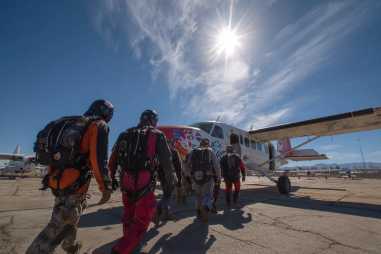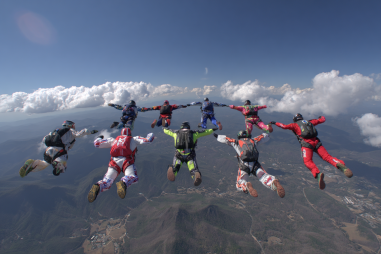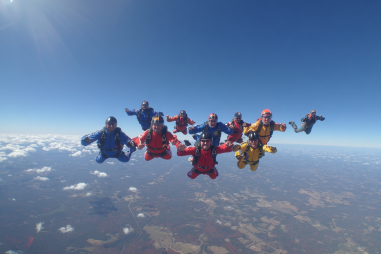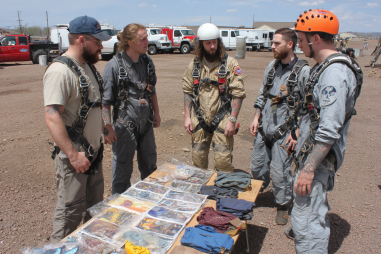Skydiving is one of the most thrilling and adventurous sports out there, constantly pushing the boundaries of human experience. Behind the adrenaline rush lies a world of sophisticated technology designed to maximize safety and enhance the overall experience. Over the years, skydiving gear has dramatically evolved thanks to technological advancements. Today, skydivers benefit from state-of-the-art equipment that not only improves safety but also usability, comfort, and performance. Let’s dive into the exciting innovations that are shaping the future of skydiving gear and how these technologies impact the sport.
Recent Technology Trends in Skydiving Gear
The skydiving community has always embraced new technologies that can improve safety and performance. Recent years have brought rapid advancements in digital systems, materials science, and communication gear. Instead of relying solely on mechanical instruments and manual operations, modern skydiving gear incorporates electronic devices, wearable tech, and even drones. The focus has been on improving reliability, reducing weight, and making gear more intuitive to use. This shift toward smarter gear is not only making skydiving safer but also more accessible for beginners and more versatile for professional jumpers.
Digital Altimeters and Heads-Up Displays
Altitude awareness is critical during a skydive to ensure timely parachute deployment. Traditionally, skydivers used mechanical altimeters that required constant visual checks. The introduction of digital altimeters has transformed this experience. These devices provide clear, easy-to-read altitude measurements and often feature audible alarms to alert the jumper when it’s time to deploy the parachute.
Taking this further, heads-up displays (HUDs) embedded in helmets or goggles are revolutionizing how skydivers monitor their altitude. These displays can project critical information directly in the jumper’s line of sight, eliminating the need to look away from the horizon. This allows for better focus on the surroundings and other jumpers, enhancing situational awareness. Some HUDs even integrate telemetry data about speed, vertical velocity, and GPS location, delivering comprehensive real-time feedback right on the visor.
Advanced Materials for Lighter and Stronger Parachutes
Skydiving parachutes have benefitted enormously from advances in materials science. Modern canopies are made from ultra-lightweight, high-strength fabrics like zero-porosity nylon, ripstop polyester, and specialized composite fibers. These materials improve the parachutes’ structural integrity, reduce air permeability, and significantly decrease weight.
Lighter parachutes contribute to easier maneuverability and faster packing times without compromising safety. Additionally, enhanced durability from these materials means gear can withstand harsh environmental conditions and repeated use with minimal wear. Designers are also experimenting with aerodynamic canopy shapes that improve glide performance and stability, giving pilots greater control during descent and landing.
Smart Helmets with Communication and Navigation Features
Helmets are essential for protection, but today’s smart helmets are so much more than just hard shells. Innovative helmets now integrate advanced communication systems, GPS navigation, and real-time data sharing functionalities. These helmets allow skydivers to maintain voice contact with their team or ground crew even during freefall, improving coordination in group jumps.
Navigation capabilities built into helmets enable jumpers to track their exact position through GPS and display heading and wind speed information. Some helmets come equipped with cameras for capturing first-person videos, allowing jumpers to analyze their performance or share breathtaking footage with others. The fusion of protection, communication, and data tools in one compact device exemplifies how technology makes the jump safer and more connected.
Integration of Automatic Activation Devices (AADs)
Automatic Activation Devices have had a transformative impact on skydiving safety. AADs continuously monitor altitude and descent speed and automatically deploy the reserve parachute if the jumper hasn’t deployed their main chute by a set altitude threshold. This is crucial in emergencies when a skydiver is unconscious or unable to pull the ripcord manually.
Modern AADs have become more sophisticated, featuring digital sensors, fail-safe mechanisms, and wireless updates. They are lighter, more reliable, and easier to maintain than previous mechanical versions. Integration of AADs with other digital devices such as altimeters and HUDs creates a cohesive safety net that significantly reduces risk during jumps.
Use of Drones and Tech in Training Gear
Training is a vital part of skydiving, and recent technological tools have enhanced how skydivers prepare before their first jump. Drones are increasingly used for high-quality video recording of freefall sequences from different perspectives, giving trainees and instructors valuable visual feedback to analyze body position, stability, and maneuver execution.
Additionally, virtual reality (VR) simulators and augmented reality (AR) headsets are becoming popular training aids. These technologies help beginners practice emergency scenarios, learn equipment handling, and experience jumps in controlled virtual environments before going airborne. Training rigs equipped with sensors can also monitor the user’s posture and movements, providing immediate feedback and correction suggestions.
Impact of Technology on Training and Safety
The influx of technology in skydiving gear has made training sessions more effective and safer. Digital feedback and simulation-based training methodologies help skydivers build muscle memory and confidence before actual jumps. Technologies like AADs and HUDs reduce human error and provide multiple safety layers during jumps, lowering accident rates.
Furthermore, enhanced communication tools keep instructors and ground crews connected to jumpers at every stage. Safety checklists and maintenance alerts integrated into digital gear management systems ensure equipment is always in optimal condition. All these improvements empower skydivers to focus on improving technique and enjoying the sport with greater peace of mind.
What the Future Holds for Skydiving Gear
As technology advances rapidly, the future of skydiving gear looks incredibly promising. Expect to see further miniaturization of sensors and electronics to create even lighter and less obtrusive wearable tech. Smart fabrics embedded with sensors could provide real-time biometrics like heart rate and oxygen levels during a jump, optimizing performance and alerting to health concerns.
Artificial intelligence may be integrated to assist with real-time decision-making, such as automatically selecting the best canopy deployment moment based on environmental conditions. Improved drone technology could lead to more sophisticated jump monitoring systems, ensuring safety from multiple angles.
Moreover, personalized gear customization through 3D printing and advanced material design will allow for tailored performance enhancements. Overall, the convergence of digital innovation, material science, and user-centered design will continue to elevate skydiving to new heights.
Embracing Technology for a Safer, More Exciting Skydive
The advancements in skydiving gear technology over the past decade have been nothing short of revolutionary. From digital altimeters and HUDs that elevate situational awareness to smart helmets enhancing communication, and advanced parachute materials improving performance, innovation is transforming the sport. Safety breakthroughs like AAD integration and tech-enabled training methods are making skydiving safer and more enjoyable for everyone. As technology evolves, so too will the experience of freefalling, promising even more exciting and secure adventures for skydiving enthusiasts worldwide.







